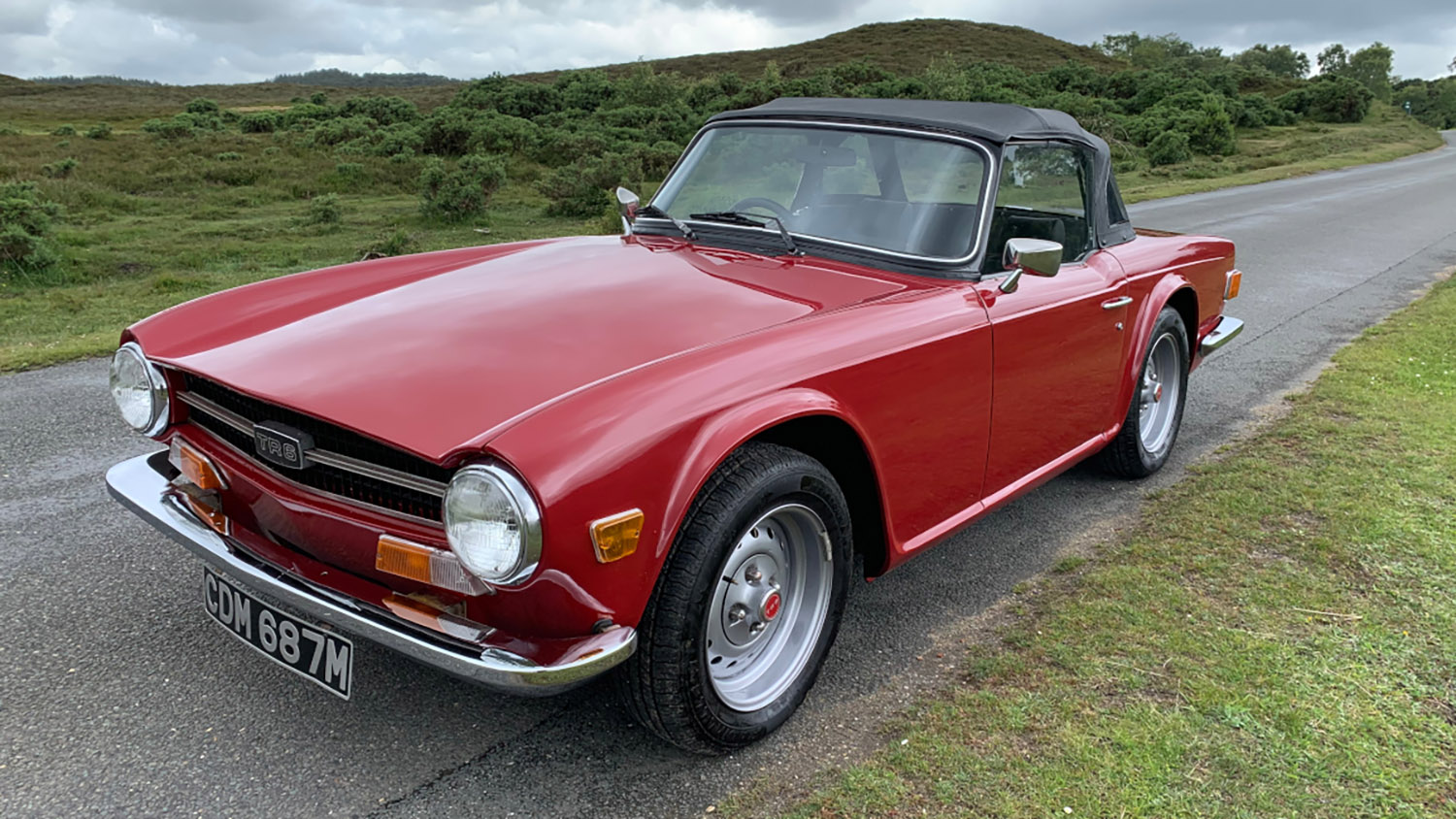BUYER’S GUIDE
Triumph TR6 review
The end of an era for a brawny breed of British sportscar, the Triumph TR6 is a characterful classic buy…
Engine
2.5-litre six-cylinder petrol
Power
152PS (112kW) @ 5,500rpm
Torque
213Nm (157lb ft) @ 3,000rpm
Kerb weight
1,130kg
0-62mph
c. 8.5 seconds
What Is It?
The final evolution of the TR series, the TR6 is much loved for its combination of burly six-cylinder power and unashamedly macho looks, the Karmann-styled body successfully putting some 1970s swagger into the more delicate lines of its predecessors. Fuel-injection for UK cars gave it strong performance, though consensus has it the more numerous carburettor-fed US market cars aren’t actually as down on pace as the numbers suggest. As a result, any TR6 makes an appealing choice for the way it drives, and fact ownership is well supported with parts and expertise.
Corrosive Areas
Rear trailing arm mounts on chassis
Rear wing to deck join
Sills and lower B-pillars
Checklist
- First cars built in 1968 for the 1969 model year, with production continuing more or less unchanged all the way through
- Only significant update came for the 1973 model year, visual differences including an obvious chin spoiler, plastic rather than chrome scuttle vent grille, new instruments and a milder tune for the fuel-injected cars
- Construction combined traditional body-on-frame configuration with more modern, fully independent suspension and rack and pinion steering
- Optional hardtop and overdrive desirable extras in any prospective purchase – post-1973 cars had a slightly different system for the latter
- Rust can – inevitably – manifest everywhere, with trailing arm mounts on the chassis a known hotspot with potentially disastrous consequences if not fixed
- Body can also go in numerous spots, including sills, floors, B-pillars and multi-skinned join between rear wings and deck
- Engines are generally tough with proper care, though fuel-injection had a reputation for being difficult to set up – this is much better understood now
- Oil leaks are to be expected but check condition of fluids and for play in the crankshaft around clutch; oil pressure should be strong, too
- Hard driving can strain gearboxes and clutches – listen for grinding in all but top
How does it drive?
Strong performance, decent brakes, rack and pinion steering and a relatively sophisticated all-independent suspension arrangement mean the TR6 delivers on the grunt of the engine in fine style. True, by modern standards performance is relatively modest, but for a ‘70s sportscar it goes well with plenty of power for keeping up with modern traffic and the handling to be fun on a twisty road. Optional overdrive meanwhile makes it a decent cruiser as well, and while the non-assisted steering takes some muscling at lower speeds, that fits with the TR’s image as something of a macho machine.
What’s good?
Credit to the TR’s fundamental design that it looked good in all its versions, the Karmann makeover of the ‘50s original nailing the ‘70s aesthetic and wearing essentials like American spec bumpers more sympathetically than most of its contemporaries. Toughness and relative mechanical simplicity – along with a great back-up for knowledgeable owners and plenty of specialists – makes it a relatively easy classic to own and live with, whether you like tinkering yourself or leaving it to the experts. If not exactly cheap, the TR is one of the more affordable of its type as well.
What’s bad?
Inevitably rust is going to be the decider between ownership proving to be a dream or a nightmare, TR6s vulnerable to both obvious bodywork corrosion around the lights, door edges and wings as well as under the skin on the separate chassis. None of this will be cheap to address, so buyer beware. If you’re bothered about driving from the ‘correct’ side it’s worth remembering the vast majority were sold in the States, conversions to right-hand-drive when re-imported not unusual but vary in quality.
Which model to choose?
Pre-1973 fuel-injected and right-hand-drive British-market TR6s command a premium for both relative rarity and the extra power as standard, and it’s easy to see why. Hardtops, overdrive and wire wheels are also popular options, though the standard steelies are actually rather handsome as well. Carb-fed US market cars are more numerous and you might yet score a mythical rust-free example from a ‘dry State’, but the reality is any TR can harbour corrosion. Best advice is (as always) to go for the best you can afford, and if that means a cheaper import with less power there are many and various ways to tune it up to equal those early injected UK cars.
Specifications – UK spec, pre-1973
Engine
2.5-litre six-cylinder petrol
Power
152PS (112kW) @ 5,500rpm
Torque
213Nm (157lb ft) @ 3,000rpm
Transmission
Four-speed manual, rear-wheel drive
Kerb weight
1,130kg
0-62mph
c. 8.5 seconds
Top speed
c. 120mph
Production dates
1968-1976 (all models, total production)
